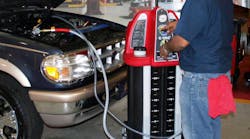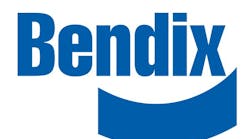Suppliers want to do what’s best for their fleet customers. Sometimes that means collaborating with competitors.
When it comes to remote diagnostic service portals, which are designed to provide web-based information from fault codes to help identify and address component-related problems with vehicles, it is critical that suppliers work together. Oftentimes, suppliers will join up with the OEMs and the fleets themselves to provide the most accurate and actionable insights to help customers keep their trucks on the road.
Beyond the fact that OEMs are requiring more collaboration, suppliers working together – even if it may be uncomfortable – is simply the right thing to do.
Gather the information
The main purpose of remote diagnostic service portals is to gather information from the vehicle’s fault codes to alert fleets of issues, identify the likely source, and provide the recommended course of action.
Vehicles produce a lot of fault codes, often as many as five or six per week. Because of the sheer volume, these alerts are often ignored. Remote diagnostics help track and prioritize fault codes based on severity.
Fleets are often inundated with information from remote diagnostic service portals that ultimately may not lead to specific actions to resolve problems identified by the fault codes from their vehicles. Because the commercial vehicle industry is a specification market where the buyer can select the engine, transmission, and other components for the truck, the information from these service portals and fault codes can be overwhelming and complex. There are many reasons for the information overload, including system-level problems that may not be as simple as replacing a component, or a lack of interaction with an expert to answer technical questions and help find a solution.
Align the information
When suppliers and OEMs are not collaborating to align fault code information, fleets may have to use multiple service portals to gather information and piece it together to begin troubleshooting the issue with the vehicle. Considering a fleet may have hundreds or thousands of vehicles, which likely are not specified the same, it is easy to see how it quickly becomes a cumbersome task to track, assess, and address issues with each truck.
The complexity of today’s truck and the ever-increasing introduction of new technologies only compounds the challenge of diagnosing issues. Yet those complexities and new technologies – and the increasing number of fault codes that accompany them – make it even more vital that fleets have the critical diagnostic information available in a cohesive format.
Fault code action plans (FCAPs) collect data from fault codes and evaluate them collectively – not just as an individual code or codes – to identify potential issues, their severity, and the best course of action, which can range from evaluating the issue during the next scheduled service cycle to servicing the vehicle immediately. The fault descriptions are presented in an easy-to-understand format and delivered in a customizable format – through email, text, or online in real-time, daily, or weekly.
Furthermore, FCAPs provide guidance on the next steps needed to correct the issue.
Utilize the information
Support for today’s commercial powertrains requires close collaboration between the automated manual transmission (AMT) and engine suppliers’ customer service organizations. AMTs help improve fuel economy, reduce driver fatigue, and improve safety, all of which aid in driver recruitment and retention. AMTs are a fine-tuned component controlled by an electronic system that communicates with the transmission and engine to determine the optimal shift points.
There are many connected solutions available that compile component diagnostic information in one place for fleet managers. Yet, to get the best possible information available, specifically for today’s commercial powertrains, close collaboration is required between the transmission and engine customer service organizations and the OEMs to make sure the systems are seamlessly integrated. Collaboration by two or more organizations can help develop joint FCAPs that pinpoint issues and streamline the amount and accuracy of information relayed via remote diagnostic systems.
There are numerous sub-systems connected to an AMT, including the truck and chassis' electrical systems. A problem in any one of the connected sub-systems can trigger a fault code for the AMT. For example, an engine- or brake-related problem can impact the AMT, setting off a fault code for the AMT even if the problem is not a transmission issue.
Collaboration among stakeholders helps pinpoint problems. The FCAP detects an event that triggered a fault code and collects data, but it also evaluates other codes to locate the source of the issue. This is an important and timesaving triage step which helps fleets identify what to check when troubleshooting an issue.
The good news is that collaboration is happening at an increasing rate. A small but growing group of OEMs and suppliers are meeting routinely to exchange data and develop joint FCAPs for portals.
Active monitoring provides additional timely support for fleets by leveraging industry experts. AMT and engine specialists, for example, actively monitor data collected by portals and proactively reach out to fleet maintenance personnel to provide guidance, identify trends, and answer questions.
Working collaboratively helps promote identification and resolution, which reduces vehicle downtime. In the end, that helps build customer trust in suppliers and OEMs, which in turn helps the entire industry.
Kevin Snow is a service engineering solutions manager at Eaton Vehicle Group. Snow has more than 20 years of experience delivering new technology to the commercial truck industry. He has earned six U.S. patents, including the convertible model transmission and a diagnostic update system. Snow holds a Bachelor of Science in Electrical Engineering from Western Michigan University in Kalamazoo, Michigan. Eaton Vehicle Group provides commercial vehicle manufacturers with products and systems designed to improve a vehicle’s overall efficiency, performance, and power – such as emissions control components, engine valves, valvetrain systems, and superchargers – as well as driveline expertise through transmission, clutch, and torque management products and systems.





